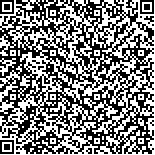| 摘要: |
| 为了探讨养殖大黄鱼(Pseudosciaena crocea)中多氯联苯(Polychlorinated Biphenyls, PCBs)的残留水平, 2007 年夏季在福建省的大黄鱼养殖区采集样品40 个, 用气相色谱法测定其中的7 种指示性PCBs残留量, 并对其残留水平、分布趋势和组成特征以及食用安全和人体健康风险进行探讨与评价。结果表明: 养殖大黄鱼中PCBs 残留范围为1.32~5.57 μg/kg(湿质量), 均值2.71 μg/kg(湿质量), 远低于国内外食品安全限量标准; 同系物以PCB153 为优势组分, 其次是PCB180, 分别占36.5%和15.4%; 同族物中以含6 个氯原子PCBs 的百分比最大, 为43.1%, 其次是5 氯和7 氯PCBs, 分别占25.8%、15.4%;与国内外其他海域相比, 福建省养殖大黄鱼PCBs 的残留量处于国内邻近海域中等水平、亚太等国外海域较低水平; 以每人50 g/d 的大黄鱼摄食量估算, 沿海居民食用养殖大黄鱼的PCBs 暴露量分别占世界卫生组织(World Health Organization, WHO)设定的每日耐受量值、美国EPA 推荐的PCBs 参考剂量值的11.3%, 由此引起的健康风险小。 |
| 关键词: 指示性多氯联苯 残留 暴露评估 养殖大黄鱼(Pseudosciaena crocea) 福建沿海 |
| DOI: |
| 分类号: |
| 基金项目:福建省海洋与渔业厅项目(闽海渔[2007]140) |
|
|
|
|
| Abstract: |
| In order to study the level of indicator polychlorinated biphenyls (PCBs) in cultured large yellow croakers(Pseudosciaena crocea), 40 samples were collected at the culture zones along the coast of Fujian, China during the summer of 2007, and the contents of seven indicator PCBs congeners were quantified by gas chromatography. The contents, distribution patterns, and compositions of PCBs, as well as the risk to human health were evaluated and discussed. The results showed that the contents of PCBs in cultured large yellow croakers ranged from 1.32μg/kg to 5.57μg/kg ( mean 2.71μg/kg wet weight), far below the limits of food security standards published at home and abroad. The content of PCB153 (36.5%) was the highest in all of the congeners, followed by PCB180 (15.4%). The contents of hexachlorobiphenyls were the highest in all of the PCBs homologs groups, occupying 43.1%, followed by pentachlorobiphenyls and heptachlorobiphenyls, occupying 25.8% and 15.4%, respectively. The contents of PCBs cultured large yellow croakers along the coast of Fujian were in the middle level compared with those reported values in domestic adjacent waters and were relatively lower than those reported values of the Asia-Pacific region. Taking 50 g/(person·day) as the possible uptake amount of PCBs from cultured large yellow croakers, it is only 11.3% of either TDI regulated by WHO or RfD suggested by US EPA, indicating that the health risk arising from the exposure to PCBs is small. |
| Key words: indicator PCBs residue exposure assessment cultured large yellow croaker Fujian coastal area |
